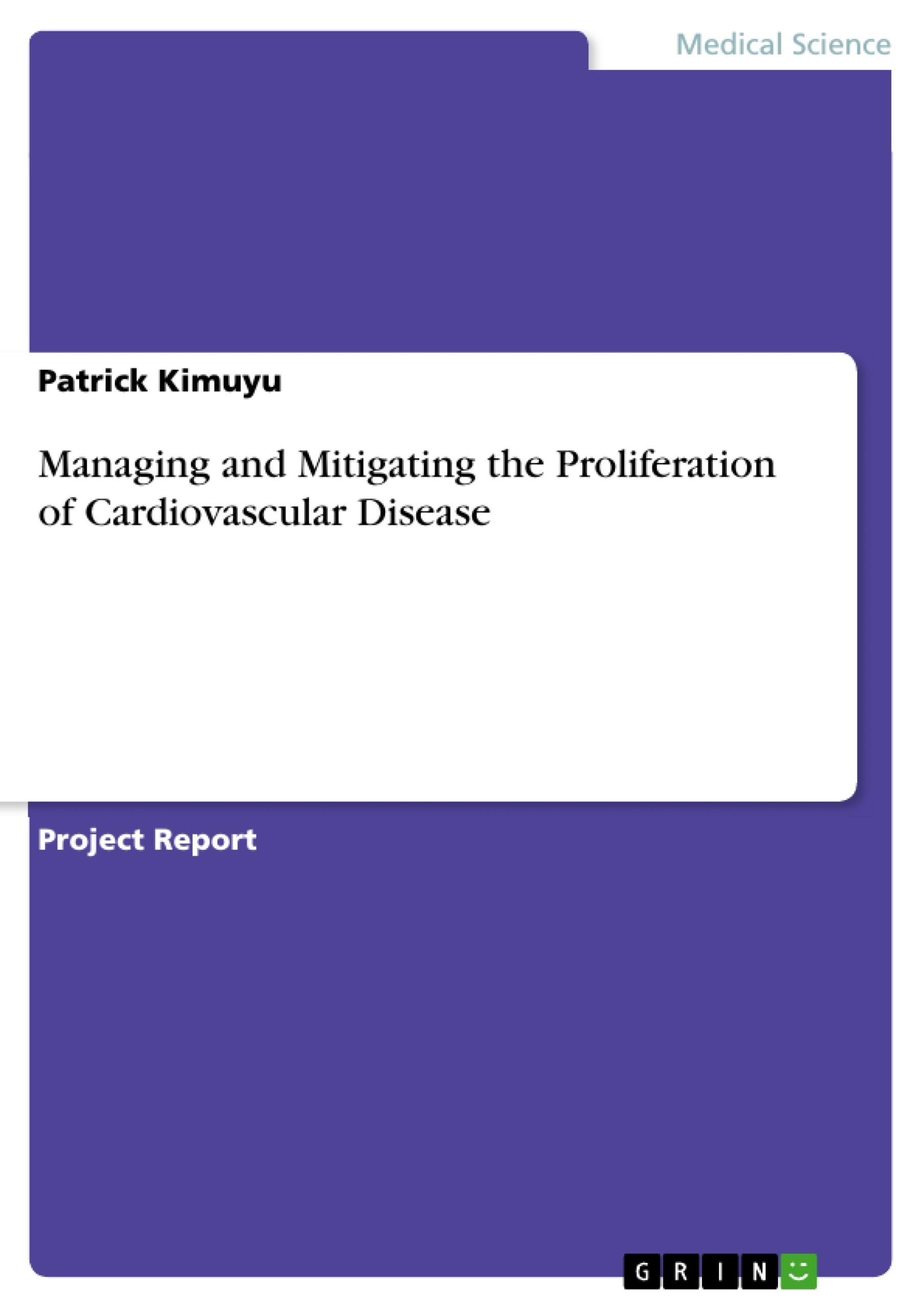Cardiovascular disease (CVD) is seemingly becoming an immense challenge to the public health system. According to epidemiological reports, CVD has become the leading cause of disability and death worldwide, and it accounts for more than 2 million deaths in the United States. Over the past decade, the prevalence and incidence rates of CVD have been taking upward trends with stroke and heart disease being the most prevalent worldwide. In the US, it is estimated that 71.3 million adults are having one or more types of cardiovascular disease (Mensah & Brown, 2007). Therefore, this paper aims at providing a comprehensive epidemiological overview of CVD and design appropriate management and mitigation approaches that are suitable for local communities in addressing the disease.
Managing and Mitigating the Proliferation of Cardiovascular Disease
Patrick Kimuyu
Introduction
Cardiovascular disease (CVD) is seemingly becoming an immense challenge to the public health system. According to epidemiological reports, CVD has become the leading cause of disability and death worldwide, and it accounts for more than 2 million deaths in the United States. Over the past decade, the prevalence and incidence rates of CVD have been taking upward trends with stroke and heart disease being the most prevalent worldwide. In the US, it is estimated that 71.3 million adults are having one or more types of cardiovascular disease (Mensah & Brown, 2007). Therefore, this paper aims at providing a comprehensive epidemiological overview of CVD and design appropriate management and mitigation approaches that are suitable for local communities in addressing the disease.
Major Causes of CVD
Cardiovascular disease is usually a general term for different blood vessel and heart problems. However, all types of heart disease are characterized by damage to the heart or blood vessels that interfere with the normal blood flow in blood vessels. In most cases, blood clots or buildup of fatty plaques, especially in the arteries, are responsible for impaired blood flow. From an epidemiological perspective, heart disease arises from a condition referred to as atherosclerosis in which thickening and stiffening of arterial walls due to the buildup of fatty plaques inhibits blood flow to body organs and tissues.
Despite the difference in the nature of blood vessel and heart problems ranging from coronary heart disease, stroke, hypertension, heart failure, to congenital heart defects, all these conditions are associated with heart arrhythmia. Therefore, there are general causes of CVD.
Impaired Glucose Tolerance
Over the years, intensive scientific inquiry has been ongoing to determine the link between impaired glucose tolerance and the risk of CVD. Initially, it was believed that impaired fasting glucose was responsible for CVD. However, cohort studies have identified impaired glucose tolerance to be the cause of CVD. One of the most reliable cohort studies
[...]
- Citar trabajo
- Patrick Kimuyu (Autor), 2018, Managing and Mitigating the Proliferation of Cardiovascular Disease, Múnich, GRIN Verlag, https://www.grin.com/document/388559




